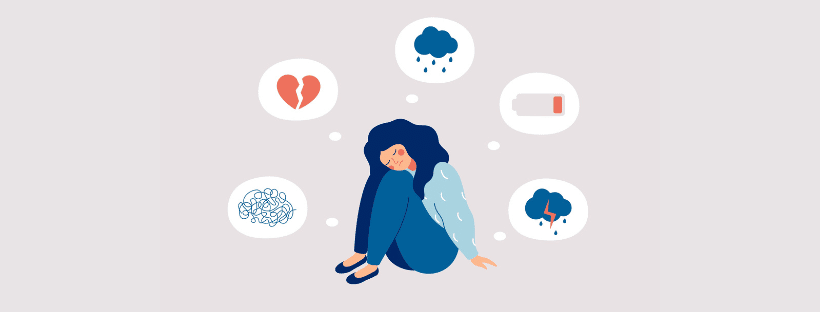.png?length=126&name=Gary-Direnfeld%20(1).png)
Article written by Gary Direnfeld
It's that time of year again. Stores have gone into full "holiday mode" and people are starting to deck the halls with boughs of holly. But while a million renditions of "It's the Most Wonderful Time of the Year" play from the radio, we can't help but ask ourselves — is it?
Aside from jingle bells and twinkling lights, the changing of seasons can be hard on many people. The days are getting shorter and there is a bitter chill in the air. It's dark when we start work in the morning, and again when we finish. Yes, this may be a time for season's greetings. But we want to talk about seasonal depression instead.

Seasonal Affective Disorder (SAD):
Unless you are the person who wrote the lyric, "Tis the Season to be Jolly," then you are probably familiar with the term seasonal depression, also known as seasonal affective disorder (SAD). But despite its acronym, SAD doesn't always present itself as sadness. It can look like agitation, trouble sleeping, overwhelming stress, and so much more. If you recognize a seasonal pattern of emotions that tend to be resolved by spring, you may be experiencing SAD.
For those facing a divorce or separation this time of year, you may find the combination of emotions overwhelming. Is it seasonal depression? Or are you having regular (and completely understandable) responses to your divorce? Separating one from the other can be a challenge.
Seasonal Affective Disorder & Divorce:
As someone who experiences seasonal affective disorder, it might be easy to attribute your emotions to the time of year. But as treatment options differ, it is important to reflect on which emotions are seasonal and which may be a result of your divorce or separation.

When your emotions relate to your present situation, we call them "situational." Situational issues tend to resolve as the life events resolve. However, counselling can help resolve such issues sooner. In more serious scenarios, you may consider speaking with a physician about medication. For example, if your mental state is interfering with managing the tasks of everyday life.
Just because you are going through a divorce or separation, doesn't mean you can't also be experiencing seasonal affective disorder. In addition to other treatments, Vitamin D is one of the main remedies to SAD. Try going for an afternoon walk to catch some rays. Or, in the absence of sunshine, some folks find relief in a therapeutic light box. You may also consider Vitamin D supplements.
As with situational depression, if the SAD is significant enough to interfere with everyday tasks, you may consider medication. Talk to your physician to discuss options.
Cuffing:
If you are experiencing seasonal affective disorder and have recently been through a divorce or separation, you may be tempted to try cuffing. We urge you to reconsider.

For those who don't know, cuffing is when people temporarily commit to a partner in the colder months. While you may think this an ideal way to combat season affective disorder, it can do more harm than good. Especially post-divorce, you may find that someone takes advantage of your vulnerability. You are in the throes of ending one previously romantic relationship. Just be aware that the conditions for entering into another at this point, on these terms, don’t provide for the most stable conditions.
As always, talking through whatever is going on for you is likely the best place to start. If you are truly out of sorts, having difficulty coping, then do also speak with your physician. Somewhere in-between, even your pharmacist can offer some non-traditional remedies that may be of service.
It may not be the most wonderful time of the year, but it doesn't have to be the worst.
%201.png?)
